Category: Critical Care
Posted: 6/25/2013 by Mike Winters, MBA, MD
(Updated: 12/15/2025)
Click here to contact Mike Winters, MBA, MD
CVP and Fluid Responsiveness
Marik PE, Cavallazzi R. Does the central venous pressure predict fluid responsiveness? An updated meta-analysis and a plea for some common sense. Crit Care Med 2013:41:1774-1781.
Category: Visual Diagnosis
Posted: 6/23/2013 by Haney Mallemat, MD
(Updated: 6/24/2013)
Click here to contact Haney Mallemat, MD
Name three differential diagnoses based on the CXR below.
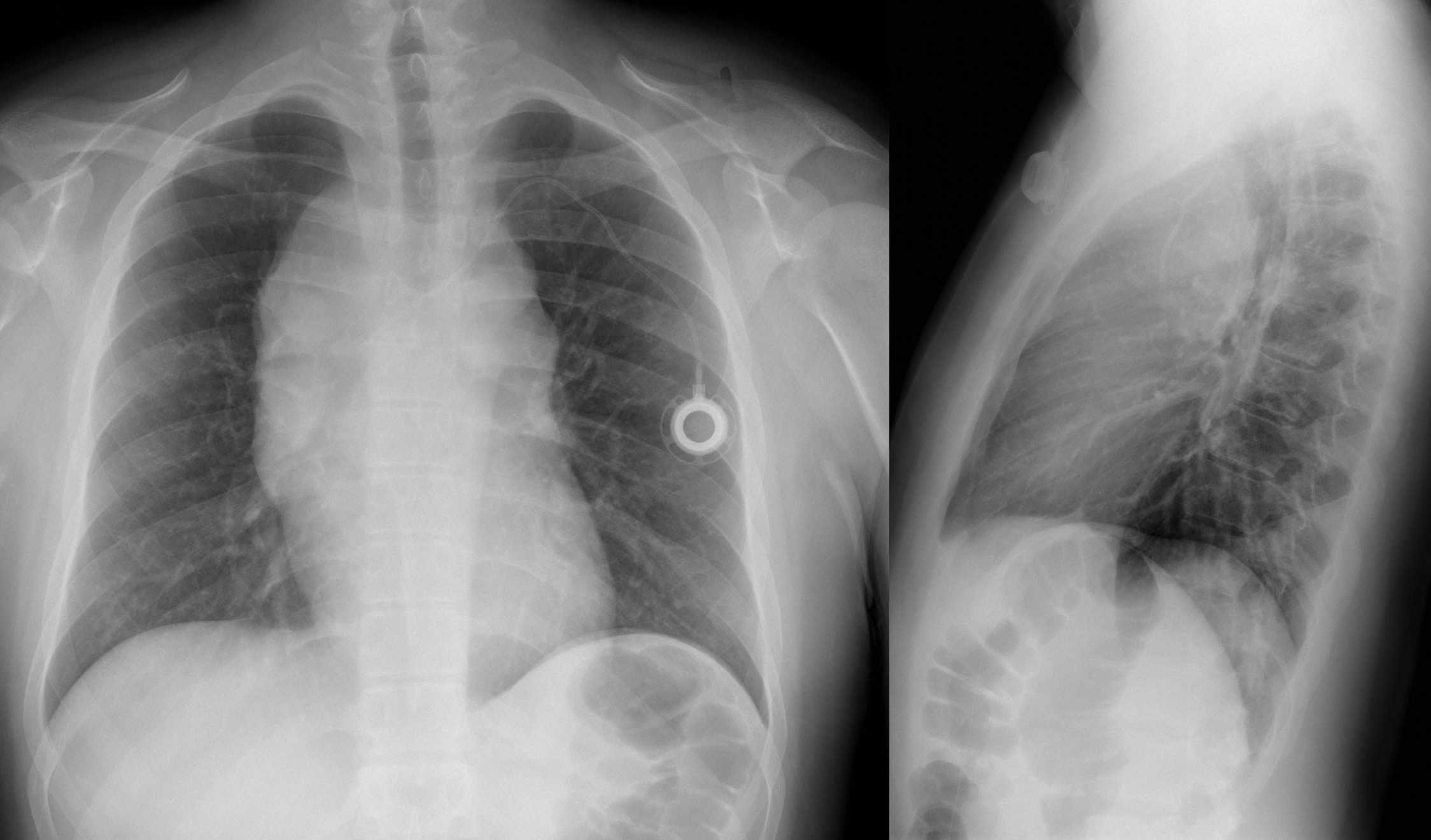
The diagnosis in this case is Non-Hodgkin lymphoma, but read below for more differentials.
Mediastinal Masses
The mediastinum is subdivided into the regions shown below. Here are some differential diagnoses based on region.
Anterior / Superior Mediastinum
Middle Mediastinum
Posterior Mediastinum
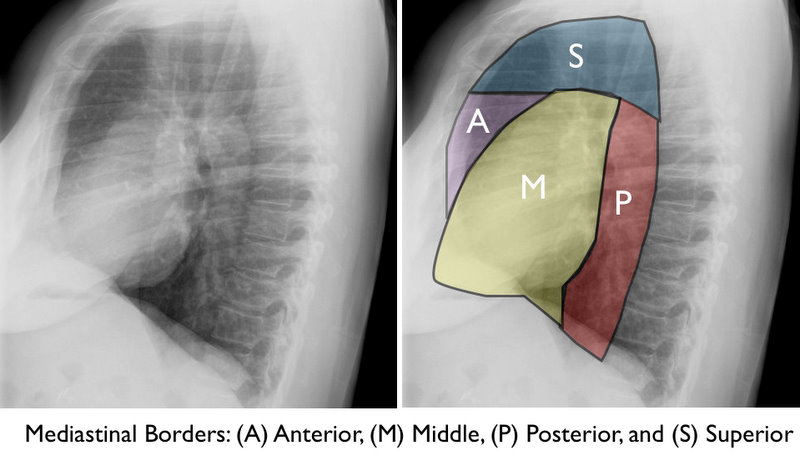
Congratulations to all the graduating residents, especially our own at the University of Maryland. I wish you all the best as you start your phenomenal careers!
Follow me on Twitter (@criticalcarenow) or Google+ (+criticalcarenow)
Category: Cardiology
Posted: 6/23/2013 by Semhar Tewelde, MD
Click here to contact Semhar Tewelde, MD
Bifascicular block
Incomplete Trifascicular block
Complete Trifascicular block
Category: Orthopedics
Keywords: Tennis Elbow, ECRB tendon (PubMed Search)
Posted: 6/22/2013 by Brian Corwell, MD
Click here to contact Brian Corwell, MD
Tennis Elbow
The tendon usually involved in tennis elbow is called the Extensor Carpi Radialis Brevis (ECRB).
The ECRB muscle helps stabilize the wrist when the elbow is straight.
Ask the patient to straighten the arm at the elbow and then perform resisted long finger extension. This will stress the ECRB and reproduce the pain. One can also ask the patient to lift the top of a chair in the air with the elbow extended.
Category: International EM
Keywords: hepatitis A, international, food-borne illness (PubMed Search)
Posted: 6/19/2013 by Andrea Tenner, MD
(Updated: 6/26/2013)
Click here to contact Andrea Tenner, MD
General Information:
Hepatitis A is a food-borne illness that is prevalent in developing countries. Currently in the US we are experiencing an outbreak in 8 states related to a frozen blend of organic berries. (Linked to Townson Farms brand sold at Costco and Harris Teeter)
Clinical Presentation:
- Case definition: sudden onset of S/S + jaundice or elevated liver enzyme levels
- S/S: nausea, anorexia, fever, malaise, abdominal pain
Diagnosis:
- Hepatitis A IgM
Treatment:
- Exposed patients should be given the Hep A vaccine within 2 weeks of exposure
- Exposed patients >40 yrs old, <1 yr old, immunocompromised, or with chronic liver disease: give immunoglobulin instead (risk of more severe disease)
- Supportive care
Bottom Line:
Patients potentially exposed to Hepatitis A in the past 2 weeks should be given either the vaccination or immunoglobulin, depending on comorbid conditions. Treatment of active infection is supportive.
University of Maryland Section of Global Emergency Health
Author: Andi Tenner, MD, MPH
http://www.cdc.gov/hepatitis/HAV/HAVfaq.htm#general
http://www.cdc.gov/hepatitis/Outbreaks/2013/A1b-03-31/index.html
Category: Critical Care
Posted: 6/18/2013 by Haney Mallemat, MD
Click here to contact Haney Mallemat, MD
Keep Immune Thrombocytopenic Purpura (ITP) in your differential for patients with thrombocytopenia and evidence of bleeding. Although ITP has classically been described in children, it can occur in adults; especially between 3rd- 4th decade.
Thrombocytopenia leads to the extravasation of blood from capillaries, leading to skin bruising, mucus membrane petechial bleeding, and intracranial hemorrhage.
ITP occurs from production of auto-antibodies which bind to circulating platelets. This leads to irreversible uptake by macrophages in the spleen. Causes of antibody production include:
Suspect ITP in patients with isolated thrombocytopenia on a CBC without other blood-line abnormalities. Abnormality in other blood-line warrants consideration of another diagnosis (e.g., leukemia).
ITP cannot be cured; treatments include:
Category: Cardiology
Posted: 6/16/2013 by Semhar Tewelde, MD
Click here to contact Semhar Tewelde, MD
Stanford type A (proximal) aortic dissection accounts for ~60% of all aortic dissections
Classic treatment includes direct surgical replacement of the ascending aorta w/prosthetic graft (+/- AV aortic repair/replacement)
~20-30% of these patients (*institutional dependent) are considered poor candidates for surgery and receive only medical management, which innately results in substandard outcomes
In this study those who were considered poor candidates for surgical repair underwent novel endovascular treatment
Endovascular repair in this study was considered both appropriate and improved traditional medical outcomes in patients who were considered poor candidates
Lu Q, Feng J, et al. Endovascular Repair of Ascending Aortic Dissection A Novel Treatment Option for Patients Judged Un t for Direct Surgical Repair. J Am Coll Cardiol 2013;61:1917–24
Category: Orthopedics
Keywords: Trapezium, Fracture (PubMed Search)
Posted: 6/15/2013 by Michael Bond, MD
Click here to contact Michael Bond, MD
Trapezium Fractures
Suspect the Diagnosis when you note
If you are suspected the diagnosis oblique radiographs or a CT scan of the wrist will note the fracture the best.
Treatment consists of placing the patient in a thumb spica splint.
Category: Pediatrics
Posted: 6/14/2013 by Rose Chasm, MD
(Updated: 12/15/2025)
Click here to contact Rose Chasm, MD
Pediatrics Text 19th edition, Nelson
Category: Toxicology
Keywords: acetylcysteine, NAC, INR, PT, prothrombin time (PubMed Search)
Posted: 6/12/2013 by Bryan Hayes, PharmD
(Updated: 6/13/2013)
Click here to contact Bryan Hayes, PharmD
In the treatment of acetaminophen poisoning with N-acetylcysteine (NAC), the PT/INR can be slightly elevated even in the absence of hepatotoxicity. Considering Prothombin Time (PT) is one of the criteria used to assess severity of liver damage in this setting, it is important to know how much the PT/INR can be affected by NAC and if it has an actual effect on coagulation factor levels.
Clinical Practice Pearls
1. Pizon AF, et al. The in vitro effect of n-acetylcysteine on prothrombin time in plasma samples from healthy subjects. Acad Emerg Med 2011;18:351-4. [PMID 21496136]
2. Jang DH, et al. In vitro study of n-acetylcysteine on coagulation factors in plasma samples from healthy subjects. J Med Tox 2013;9:49-53. [PMID 22733602]
Follow me on Twitter (@PharmERToxGuy)
Category: International EM
Keywords: Listeria, cheese, infectious disease, fever, gastroenteritis, pregnant (PubMed Search)
Posted: 6/12/2013 by Andrea Tenner, MD
Click here to contact Andrea Tenner, MD
General Information:
-Listeria can cause serious infections in vulnerable groups: adults >65 years old, pregnant women, newborns, immunocompromised
-In a recent CDC report, infection with Listeria was associated with a 20% mortality rate.
Clinical Presentation:
- History of cantaloupe, soft cheese, or raw produce ingestion
- Non-specific symptoms: fever, myalgias, occasionally preceded by GI symptoms
-Can have headache, stiff neck, confusion, AMS, miscarriage or stillbirth in pregnant women
Diagnosis:
- Blood, CSF, or amniotic fluid culture showing Listeria monocytogenes
- Listeria is a reportable disease
Treatment:
- Ampicillin and Penicillin G are the drugs of choice
- Add gentamycin in CSF infection, endocarditis, the immunocompromised, and neonates.
Bottom Line:
Listeria infections have a high mortality rate and can be found worldwide. Suspect in patients who have febrile syndromes and travel to areas where they may consume unpasteurized cheese.
University of Maryland Section of Global Emergency Health
Author: Andi Tenner, MD, MPH
Older Americans, pregnant women face highest risk from Listeria food poisoning. http://www.cdc.gov/media/releases/2013/p0604-listeria-poisoning.html
http://www.cdc.gov/listeria
Category: Critical Care
Posted: 6/11/2013 by Mike Winters, MBA, MD
Click here to contact Mike Winters, MBA, MD
Rhabdomyolysis in the Critically Ill
Shapiro ML, Baldea A, Luchette FA. Rhabdomyolysis in the Intensive Care Unit. J Intensive Care Med 2012; 27:335-342.
Category: Visual Diagnosis
Posted: 6/10/2013 by Haney Mallemat, MD
Click here to contact Haney Mallemat, MD
13 year-old female with ankle pain following fall down escalator. What's the diagnosis?
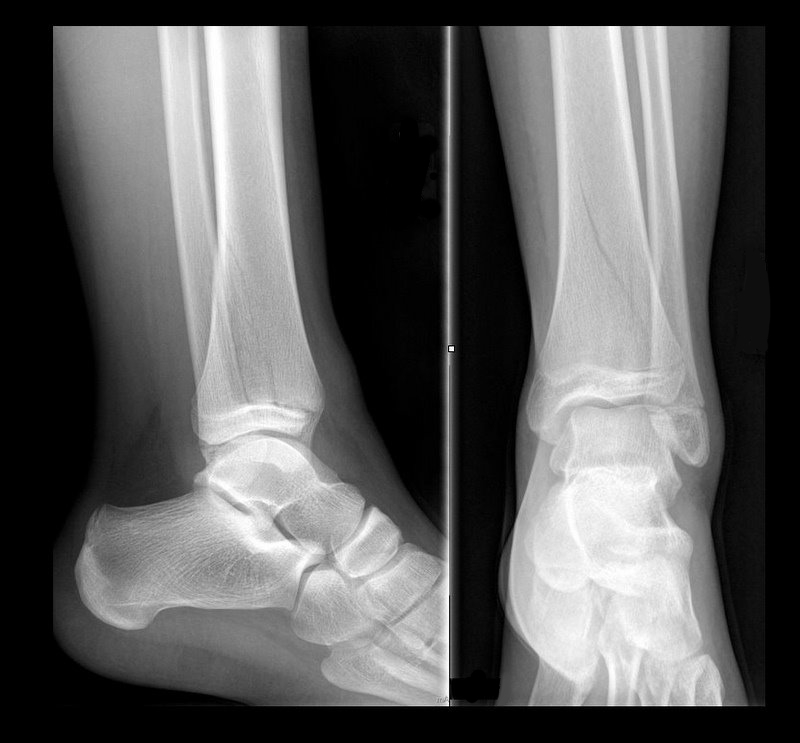
Answer: Tri-plane ankle fracture
Tri-plane Fractures
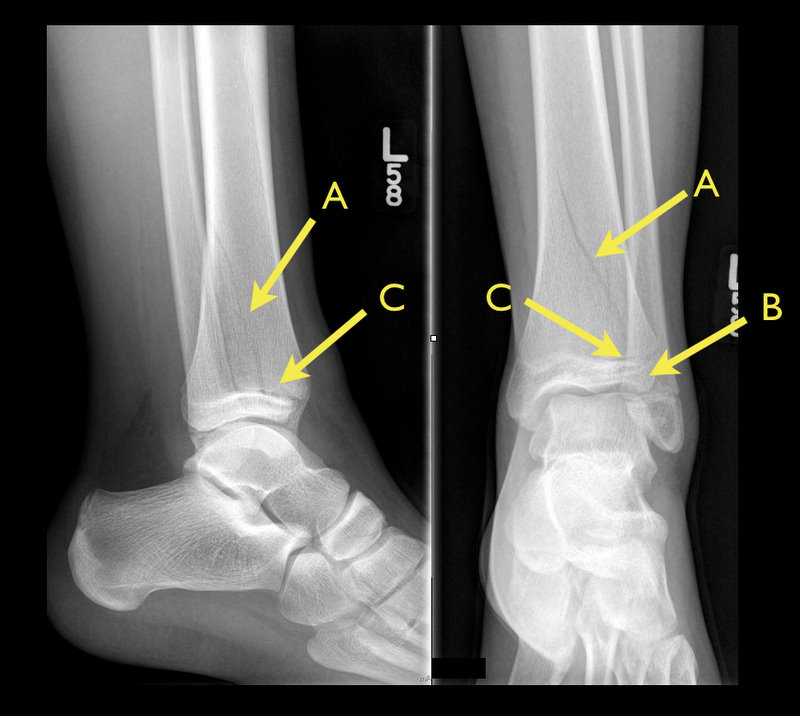
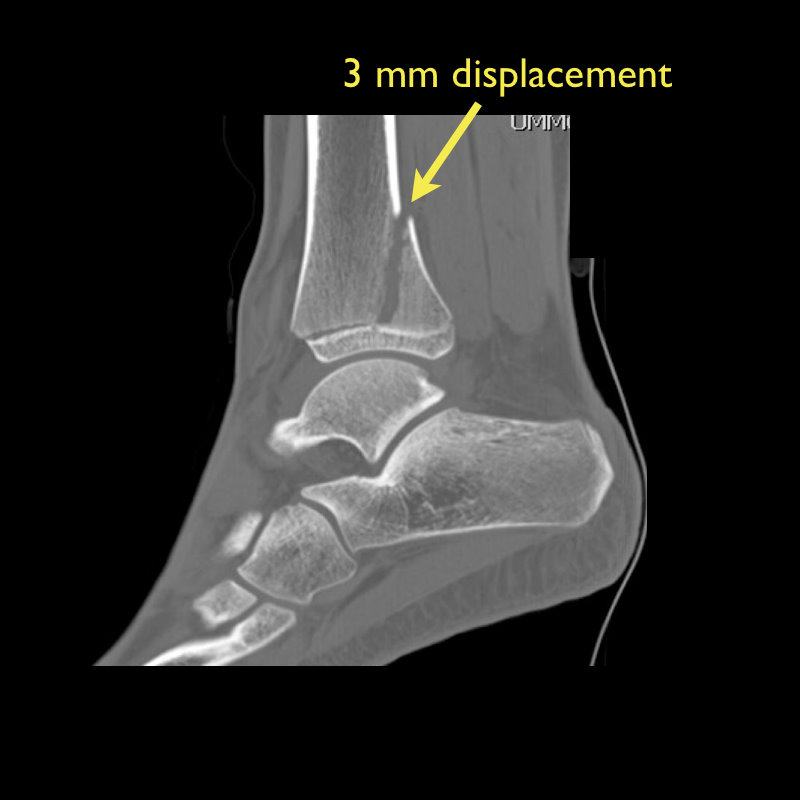
Follow me on Twitter (@criticalcarenow) or Google+ (+criticalcarenow)
Category: Cardiology
Posted: 6/9/2013 by Semhar Tewelde, MD
Click here to contact Semhar Tewelde, MD
Khoo C, Chakrabarti S, et al. Recognizing Life-Threatening Causes of Syncope. Cardiology Clinics. Volume 31, Feb, 2013
Category: Orthopedics
Keywords: Concussion, Adolscents (PubMed Search)
Posted: 6/8/2013 by Brian Corwell, MD
(Updated: 6/9/2013)
Click here to contact Brian Corwell, MD
The adolescent brain has not yet reached full maturation and is in a period of rapid development from ages 14 - 16.
Adolescents have been found to be more sensitive to the effects of concussion than adults
Concussed adolescents have deficits in attention and executive function lasting up to 2 months post injury.
Be aware that the adolescent brain will require extended recuperation time following injury
In the future, discharge instructions might need to say more than "don't get hit in the head till your headache goes away." Because of deficits in attention and executive function, physicians should consider recommendations about adolescents and jobs, school work and driving an automobile.
Effects of concussion on attention and executive function in adolescents. Howell D, Osternig L, et al. Medicine & Sceince in Sports and Exercise. June 2013
Category: Pediatrics
Posted: 6/7/2013 by Jenny Guyther, MD
(Updated: 12/15/2025)
Click here to contact Jenny Guyther, MD
Infant lumbar puncture is often difficut and may require repeated attempts. The traditional body positioning is lateral decubitus. Previous studies have examined the saftey of having the patient in a sitting position, and neonatal studies have suggested that the subarachnoid space increases in size as the patient is moved to the seated position. A study by Lo et al published last month looked to see if the same held true in infants.
50 healthy infants less then 4 months old had the subarachnoid space measured by ultrasound between L3-L4 in 3 positions: lateral decubitus, 45 degree tilt and sitting upright.
This study found that the size of the subarachnoid space did not differ significantly between the 3 positions. Authors postulated that a reason for increase sitting LP success rate that had been reported in anestesia literature with tilt position could be due to other factors such as increased CSF pressure, intraspinous space widening or improved landmark identification.
Sitting or Tilt Position for Infant Lumbar Puncture Does Not Increase Ultrasound Measurements of Lumbar Subarachnoid Space Width. Pediatr Emer Care 2013;29: 588-591.
Category: Toxicology
Keywords: Opioid, methadone, pain management, tolerance, analgesia (PubMed Search)
Posted: 6/6/2013 by Ellen Lemkin, MD, PharmD
Click here to contact Ellen Lemkin, MD, PharmD
Gussow, L. Toxicology Rounds. When Opioids Increase Pain. Emergency Medicine News Feb 2013. 35(2):6.
Category: International EM
Keywords: global, health, accountability, sovereignty (PubMed Search)
Posted: 6/5/2013 by Andrea Tenner, MD
(Updated: 12/15/2025)
Click here to contact Andrea Tenner, MD
General Information:
-The global health world is faced with an unprecedented challenge of a trio of threats:
1. Infections, undernutrition, reproductive health issues
2. Rising global burden of non-communicable diseases and risk factors
3. Challenges arising from globalization (climate change and trade politics)
-Definitions of global health are variable and can emphasize anything from types of health problems, populations of interest, geographic area or a specific mission. This makes governance and analysis difficult.
-During the past decade there has been an explosion of more than 175 initiatives, funds, agencies, and donors. Health is increasingly influenced by decisions made in other global policymaking areas.
-The major governance challenges for global health are:
1. Defining national sovereignty in the context of deepening health interdependence
2. Maximizing cross-sector interdependence
3. Developing clear mechanisms of accountability for non-state actors
Relevance to the US physician:
The Global Health System and its governance affects our ability to work effectively within the US and how we structure efforts to expand the reach of timely, effective emergency care worldwide.
Bottom Line:
The Global Health System has become more complex. Any development of Emergency Care Systems must take into account the complexity of actors in the field of global health.
The University of Maryland Section of Global Emergency Health
Author: Emilie J. B. Calvello, MD, MPH
An interactive graphic can be found at: http://www.nejm.org/doi/full/10.1056/NEJMra1109339?query=featured_home
Frenk, J. and Moon, S. Governance Challenges in Global Health. NEJM 2013; 368: 936 – 42.
Category: Critical Care
Posted: 6/4/2013 by Haney Mallemat, MD
Click here to contact Haney Mallemat, MD
Therapeutic hypothermia (TH) following out-of-hospital cardiac arrest (OHCA) has increasingly been utilized since it was first described. TH following in-hospital cardiac arrest (IHCA), on the other hand, is not as commonplace or consistent despite a recommendation by the American Heart Association (AHA).
A recent prospective multi-center cohort-study demonstrated that of 67,498 patients with return of spontaneous circulation (ROSC) following IHCA only 2.0% of patients had TH initiated; of those 44.3% did not even achieve the target temperature (32-34 Celsius).
The factors found to be most associated with instituting TH were:
Bottom-line: Hospitals should consider instituting and adhering to local TH protocols for in-house cardiac arrests.
Follow me on Twitter (@criticalcarenow) or Google+ (+criticalcarenow)
Category: Visual Diagnosis
Posted: 6/3/2013 by Haney Mallemat, MD
Click here to contact Haney Mallemat, MD
Ever wonder how to place a pigtail catheter?
Check out this video to learn how, click here
Follow me on Twitter (@criticalcarenow) or Google+ (+criticalcarenow)
